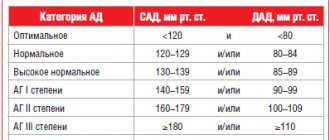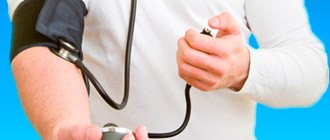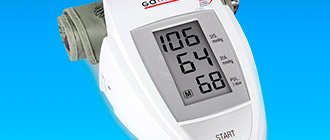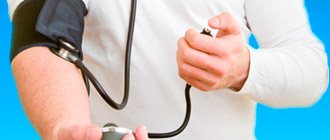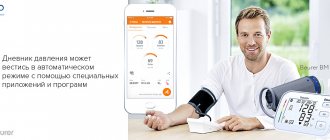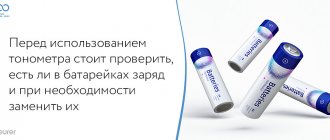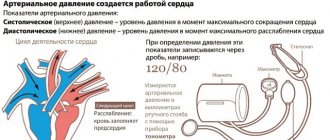At the present stage, almost every adult knows how to measure blood pressure at home, since this is a vital indicator of the functioning of the cardiovascular system, which doctors emphasize. And there is a tonometer (a device for monitoring blood pressure levels) in almost every home. Unfortunately, hypertension (increased blood pressure values) and hypotension (decrease in values) are now much younger, that is, they are recorded not only in older patients, as before, but also in the younger generation.
The article provides recommendations on how to measure blood pressure correctly, what methods of recording indicators are used and how often the procedure for measuring blood pressure (BP) levels can be carried out. The most commonly used types of tonometers are also considered.
How to choose a device for measuring blood pressure
Devices for measuring pressure are divided into several groups. Depending on the automaticity of operation, mechanical, semi-automatic and electronic devices are distinguished. And there are also mercury models. In addition to shoulder tonometers (standard), there are also those that measure blood pressure at the level of the wrist, finger, and thigh. Such a large selection allows you to select a device for a specific patient if it is not possible to record blood pressure values in the region of the brachial artery.
Mercury
Mercury devices are highly accurate. They are not used at the present stage at home, due to the need for competence in working with such devices. The error of such devices does not exceed 2 mm Hg. Art., which meets the requirements of international standards. Unfortunately, manufacturers of mercury tonometers indicate that they do not supply such devices to European countries. Why this is so is unknown, because the products are of the highest quality.
Mechanical
They are most often used to determine blood pressure levels in medical institutions. These devices are least dependent on external influences and do not require a battery or batteries. The device consists of a cuff, an air pump equipped with a special valve, tubes and a sphygnomanometer. The only condition for correctly measuring blood pressure is the presence of certain skills that allow you to hear the beginning and end of the appearance of specific knocks, sounds, and noises.
Mechanical blood pressure monitors are considered affordable, accurate, and durable. It is better to have one of your friends or relatives help you measure the patient’s blood pressure, since when you independently pump air into the cuff, oscillatory movements of the hands occur, which can distort the results of the study.
Semi-automatic
Such models are also equipped with cuffs and air blowers, but they do not require the ability to listen to tones, since the diagnostic result is displayed digitally on the device screen. You can purchase a semi-automatic blood pressure monitor equipped with voice functions, which is suitable for visually impaired people.
Machine
Electronic devices are great for measuring your blood pressure yourself, without assistance. All the patient needs is to fix the tonometer cuff in the desired place and press the appropriate button. The device independently pumps in air, releases it independently, and the final result is displayed on the device screen.
Automatic blood pressure monitors belong to the most expensive category of models and require the use of batteries. However, blood pressure measurements may be slightly distorted, since the error of such devices is greater than, for example, that of mechanical or mercury tonometers.
On the wrist and finger
These are automatic compact devices that can be easily carried in a bag and are convenient to use. Devices that are fixed at the level of the wrist joint are recommended for use not only by relatively healthy people, but also by patients with burns and dermatological diseases in the shoulder area. Unfortunately, wrist tonometers have a high error in the results. This is due to the fact that the amplitude between compression and relaxation of the wrist artery is insignificant (due to the size of the cuff).
Measuring the blood pressure level on your finger is a funny, but not logical, from a medical point of view, thing. Finger blood pressure monitors are best viewed as modern gadgets, but not as serious and precise devices. After all, the pressure numbers displayed on the device’s screen will depend on many indicators: air temperature, temperature of the finger itself, humidity level, etc. Finger tonometers are not used in medical institutions.
For the hip
The algorithm for measuring pressure on the femoral artery is practically no different from the standard procedure for recording indicators. The difference in the tonometers used is the size of the cuff and the strength of the Velcro. The girth of such cuffs ranges from 40–66 cm, with the standard 15–22 cm for children, 22–32 and 32–42 cm for adults.
Algorithm for studying blood pressure in peripheral arteries
1. Preparation for the procedure:
1) Introduce yourself to the patient, explain the purpose and course of the procedure.
2) Treat hands hygienically and dry.
3) Give the patient a comfortable position, sit or lay him down.
2. Performing the procedure:
1) Expose the patient's hand, placing it palm up, at the level of the heart.
2) Place the blood pressure cuff on the patient’s shoulder. Two fingers should be placed between the cuff and the surface of the shoulder (for children and adults with small arms - one finger), and its lower edge should be located 2.5 cm above the ulnar fossa.
3) Gradually inject air with the tonometer bulb until the pulse disappears (the disappearance of the pulse is recorded by the researcher by palpation). This pressure level, recorded on the tonometer scale, corresponds to systolic pressure.
4) Deflate the air from the tonometer cuff and prepare the device for re-inflation.
5) Place the stethophonendoscope membrane at the lower edge of the cuff above the projection of the brachial artery in the area of the ulnar cavity, lightly pressing it against the skin, but without making any effort.
6) After fixing the membrane, quickly inflate the cuff to a level exceeding the obtained result by 30 mmHg.
7) Maintaining the position of the stethoscope, begin to deflate the air from the cuff at a speed of 2-3 mm Hg. in a second. When the pressure is more than 200 mmHg. it is allowed to increase this indicator to 4-5 mm Hg. in a second.
 Remember the appearance of the first tone on the scale on the tonometer - this is the systolic pressure, the value of which should coincide with the estimated pressure obtained by palpation.
Remember the appearance of the first tone on the scale on the tonometer - this is the systolic pressure, the value of which should coincide with the estimated pressure obtained by palpation.
9) Mark on the scale on the tonometer the cessation of the loud last tone - this is diastolic pressure. To control the complete disappearance of sounds, continue auscultation until the pressure in the cuff decreases by 15-20 mm Hg. relative to the last tone.
3. End of the procedure
1) Inform the patient the result of blood pressure measurement.
2) Treat the phonendoscope membrane with an antiseptic or disinfectant.
3) Treat hands hygienically and dry.
4) Record the results in the appropriate medical records. If there is a change in the patient's blood pressure, inform the doctor.
Pulse research algorithm.
I. Preparation for the procedure.
1. Introduce yourself to the patient, explain the process and purpose of the pulse examination procedure. Obtain patient consent for the procedure.
2. Treat hands hygienically and dry.
3. Offer the patient or give him a comfortable position.
II. Execution of the procedure.
1. Place the first finger of the hand on the back side above the patient’s hand, and the second, third and fourth fingers along the radial artery, starting from the base of the patient’s first finger.
2. Lightly press the artery to the radial hand and feel its pulsation.
3. Take a watch with a stopwatch.
4. Count pulse waves in the artery for 1 minute.
5. Determine the intervals between pulse waves (pulse rhythm)
6. Determine pulse filling (volume of arterial blood forming a pulse wave).
7. Compress the radial artery and evaluate the pulse tension.
III. End of the procedure.
1. Register the pulse rate in the temperature sheet graphically, and in the observation sheet digitally.
2. Inform the patient about the results of the study.
3. Wash and dry your hands.
4. Treat your hands with an antiseptic.
Patient preparation
First of all, you need to be sure that the device used to measure pressure is working properly. If we are talking about a mechanical device, the cuff must be completely deflated and the arrow must be at the zero mark. Otherwise, you should contact a specialist to calibrate the device. It is also important to ensure that the cuff used is fully suitable for the person being examined. The diagnostic results will depend on this.
An hour before measuring blood pressure, you need to give up cigarettes, coffee and other drinks containing caffeine, and alcohol. And physical activity and the use of medications that affect blood pressure levels and heart rate are also not recommended (with the exception of vital conditions, in which the use of such medications is discussed with the attending physician). You can measure blood pressure in a standing, sitting, or lying position. Before the procedure, it is advisable to spend 7-10 minutes in a calm environment, catch your breath, and empty your bladder. The numbers should be measured on both arms (or legs) at intervals of several minutes.
Errors in blood pressure measurements interfere with correct diagnosis
March 14, 2021 marks the 100th anniversary of the death of the Russian surgeon Nikolai Sergeevich Korotkov, who proposed a non-invasive method of auscultal (sound) measurement of blood pressure (BP) back in 1905. And although the Korotkoff method has been used for a long time, errors are still made in measuring blood pressure. On March 3, 2020, the traditional “Scientific Tuesday” of the Federal State Budgetary Institution “NMITs TPM” of the Ministry of Health of Russia was devoted to the issues of measuring blood pressure. , Doctor of Medical Sciences, Professor V.M., reviewed the current international recommendations for measuring blood pressure. Gorbunov.
He gave examples of specific recommendations for blood pressure measurement developed by the American Heart Association (AHA) and the Lancet Commission on Hypertension Group and discussed in detail various aspects of this procedure.
Talking about office blood pressure measurement (measurement within the walls of a medical institution), Vladimir Mikhailovich presented interesting data on mathematical modeling of the prevalence of arterial hypertension (AH) with a normal diet and with a reduction in daily salt intake using the example of Canada. The expected effect of the intervention is only 5 mm Hg. However, even such a seemingly insignificant reduction in blood pressure in the population would have a huge effect: the prevalence of hypertension would decrease from 3.5 to 2.5 million patients, or by 30.3%. This implies the need for extremely careful and accurate blood pressure measurements.
The speaker noted some important elements of standard blood pressure measurement that need to be addressed. Outside of measurement, the mercury column of the tonometer must be at zero, the tonometer must not be damaged, and the numbers must be clearly visible. Aneroid (mechanical) tonometers require regular calibration.
As for electronic tonometers, according to Professor V.M. Gorbunov, the oscillometric algorithms used in them are different and are not disclosed by the manufacturers. Therefore, these devices must be validated according to an international protocol in an independent clinical study. However, in some patients, measurements may be inaccurate due to the limitations of the oscillometric method, which most accurately estimates mean, but not systolic or diastolic blood pressure. As the specialist noted, the validation of electronic blood pressure measurement devices is a critically important point when choosing them for clinical purposes.
To avoid errors when measuring blood pressure in a health care setting, it is important to record readings to the nearest 2 mmHg. avoid arbitrary rounding to 5 or 10 mmHg. Art. At the patient’s first visit to the doctor, blood pressure measurements should be taken on both arms, and subsequently measurements should be taken on the arm on which higher pressure is recorded. At each visit, the patient must take at least two measurements. The Expert Committee recommends the use of arithmetic averages for clinical decisions.
As Vladimir Mikhailovich said, when measuring blood pressure, four types of errors can occur: those associated with the patient, with the procedure itself, with the device and with the observer. Thus, the patient’s intake of food and caffeinated drinks, smoking before the procedure, a full bladder and the well-known so-called “white coat effect” can lead to errors in measurements.
Procedural errors include measuring blood pressure after insufficient rest, incorrect patient positioning (crossed legs), low cuff placement (below heart level), talking during the procedure, and deflating air too quickly. Erroneous data can also be obtained with an inappropriate cuff size. However, the speaker noted, the error arising due to the last two reasons, well known to doctors, is significantly lower than when the basic conditions for preparing the patient and performing the procedure are not observed (insufficient rest, smoking, talking).
Observer errors include arbitrary rounding of the obtained figures, which in 80% of cases gives inaccurate results of systolic and diastolic blood pressure, a single measurement (according to the 2019 AHA recommendations, blood pressure figures can be significantly higher than the true ones, which leads to gross errors in the classification of patients with hypertension) and inaccuracies in determining Korotkoff sounds.
In his speech, Professor V.M. Gorbunov noted that the concept of “office dimension” is becoming more and more blurred with the advent of new varieties of it. Today, there are measurements in clinical studies (carefully standardized, carried out according to a protocol), measurements in real practice - “casual” (without strict compliance with the requirements for the procedure and giving inflated indicators) and automatic office measurements (has many advantages, but gives somewhat underestimated blood pressure numbers and requires additional resources; not yet available in our country).
As Vladimir Mikhailovich said, one of the serious disadvantages of “casual measurements” is that in 20-45% of cases it leads to errors in classifying a patient with hypertension. In addition, during such measurements, high variability of results is noted; systolic pressure is overestimated by 10-15 mm Hg. Art. In addition, the results obtained weakly correlate with signs of target organ damage due to hypertension.
Professor V.M. Gorbunov also spoke in detail about the phenotypes of arterial hypertension and additional indicators of blood pressure, recalled the differences in the recommendations of the European and American Cardiological Societies for diagnosing and determining the degree of arterial hypertension, and provided a new screening algorithm for determining blood pressure phenotypes.
The report also discussed the practical significance of various indicators of blood pressure variability. In conclusion, V.M. Gorbunov focused on new approaches to determining ambulatory blood pressure standards based on assessing the risk of cardiovascular complications. New standards make it possible to more accurately formulate a diagnosis in patients with “problematic” blood pressure phenotypes (masked hypertension and “white coat” hypertension).
Measurement methods and techniques
Next, we consider the rules for recording indicators using various types of tonometers and in different projections of large arteries.
Standard mechanical measurement
We are talking about the Korotkov method. The arm is freed from clothing so that the sleeve does not squeeze the shoulder above the level of the cuff. The cuff of the device is applied to the projection of the brachial artery (several centimeters above the elbow). Before starting the procedure, you need to check that one finger fits between the cuff and the patient’s hand. Use your finger to find the pulsation point of the artery and place a phonendoscope in this place.
Next, the air blower valve is closed, the air is pumped until the noise and knocking in the phonendoscope disappear. Next, another 30 mmHg is added. Art., after which the air gradually descends, at the same time the appearance of the first knock is heard. The first knock is the first Korotkoff sound, which corresponds to the systolic (upper) pressure figure. Next, specialists listen to the second, third and fourth Korotkoff sounds. Only medical staff can understand the differences between them. The fifth tone is the moment during which the sound of the tones disappears. The number at which the fifth tone is recorded corresponds to the diastolic (lower) indicator.
Important! Some patients do not have a fifth Korotkoff sound. In this case, the fourth tone corresponds to diastolic blood pressure.
How to use a semi-automatic
The algorithm of actions is as follows:
- In addition to the general preparation of the patient, which is described above, you need to check the connection of the cuff and bulb tubes to the corresponding connectors on the device.
- Attach the cuff in the same way as when measuring with a mechanical device.
- Press the button responsible for removing excess air from the cuff.
- Inflate air only after the heartbeat icon appears on the device screen.
- An audible signal will alert the patient when to stop pumping. Then the air will descend on its own at the required speed. Blood pressure numbers will appear on the tonometer screen.
Example of a semi-automatic tonometer
automatic devices are good because they can record the presence of arrhythmia in a patient. If the heartbeat rhythm is abnormal, a corresponding icon appears on the monitor.
Electrical appliance
After the cuff is fixed slightly above the elbow bend, you need to select a memory block on which the result will be recorded. Next, all the necessary symbols will be displayed on the device’s display, followed by “00”. The next stage is automatic air injection, during which the heart rate is measured. After reaching the required peak, the air gradually descends. As a result, the following indicators are displayed on the device display:
- HELL;
- pulse;
- arrhythmia (if present);
- pressure level according to the World Health Organization scale.
Optimal pressure numbers are indicated in light green, normal – green, borderline – orange. The appearance of red flowers indicates hypertension: the higher the indicators, the darker the shade.
On the hip
How is pressure measured in the femoral artery? Experts recommend using mechanical devices. In this case, the cuff of the device is fixed at the level of the middle third of the thigh, and the phonendoscope is applied to the site of pulsation of the popliteal artery (below the knee). The diagnostic algorithm is fully consistent with standard measurements in the shoulder area. If blood pressure was measured in the lower extremities, 10–30 mmHg should be subtracted from the results obtained in the upper extremities. Art., and the lower indicator remains unchanged.
On the wrist
The wrist tonometer is placed at the level of the wrist joint with the display facing you. There should be a distance of 1 cm to the palm. When recording the results in a sitting position, the hand should be positioned so that the tonometer is at the level of the middle of the sternum. Wrist tonometers are automatic models, the instructions for use of which are described above. The permissible error in blood pressure results is 3 mm Hg. Art., heart rate – 5%.
Blood pressure measurement algorithm
Home › News › Algorithm for measuring blood pressure
The success of treating hypertension depends on many factors. One of them is the correct measurement of blood pressure (BP). This issue is important for ordinary patients conducting self-monitoring of blood pressure, and for doctors assessing the effectiveness of prescribed treatment, and for scientists developing new drugs against hypertension.
How to measure blood pressure To determine blood pressure levels, two types of devices are used: based on the Korotkoff method and oscillometric. Measurement by the Korotkoff method is carried out using a cuff with a pump, a pressure gauge and a phonendoscope. This method is considered the most accurate and is officially recognized as a reference method. However, it is not always convenient. Therefore, electronic tonometers have become widespread.
Electronic blood pressure devices use oscillometric analysis, they measure the changing air pressure in the cuff as the blood pumps through the narrowed vessel. Electronic devices for measuring blood pressure are quite acceptable for self-monitoring, as well as at a doctor’s appointment. They must undergo regular calibration, that is, adjustment and verification of measurement accuracy.
When to measure blood pressure Measuring blood pressure is most often necessary to confirm hypertension and to evaluate the effectiveness of its treatment. Depending on the goals, the time and conditions for blood pressure registration may be different.
For self-monitoring, a healthy person without complaints can measure blood pressure no more than once every six months. Mandatory annual monitoring of blood pressure levels is required during a preventive medical examination, including as part of a medical examination.
A patient with hypertension needs to measure blood pressure daily, in the morning and evening at the same time, before taking medications and food, at rest, and after emptying the bladder.
If necessary, additional measurements are taken. However, blood pressure levels in patients with hypertension often fluctuate greatly. Continuous blood pressure measurements that reveal such changes lead to refusal of treatment or excessive use of medications. Therefore, patients are recommended to keep a diary of monitoring only morning and evening blood pressure and show it to their doctor once a month to adjust therapy.
You should not measure your blood pressure after walking or other physical activity. In this case, a physiological (normal) increase in indicators occurs. Only a doctor can assess how adequately the blood pressure has increased.
Blood pressure should be measured no earlier than after a half-hour rest. You should not smoke for at least an hour before the examination, but it is better to give up this habit altogether.
How to measure During measurement, the tonometer cuff should be located on the middle third of the upper arm at the level of the heart.
You need to sit in a chair or chair so that your back has support and relax. If the measurement will be carried out in a lying position, you should prepare a small pillow under your shoulder and lie down. After this, you need to rest for 5 minutes.
The patient or assistant then places the cuff on the upper arm. It should be located on the middle third of the shoulder at the level of the heart, lie flat, without folds or twisting, fitting well, but not squeezing the shoulder. The cuff should not be placed over clothing or under a sleeve that is rolled up.
When measuring using the Korotkoff method, the patient or his assistant wears a phonendoscope. It should have an intact membrane and comfortable headphones. It is recommended to place the pressure gauge at eye level or slightly below so that the scale is clearly visible. It can be attached using a clip.
Then, using a rubber bulb, air is pumped into the cuff, monitoring the readings of the pressure gauge. In this case, it is advisable to feel the pulse on the brachial artery with your fingers, that is, on the inner surface of the elbow. Usually it is enough to achieve a pressure 30 mm higher than the one at which the pulse stopped, that is, the artery is completely compressed.
A phonendoscope membrane is placed on the inner surface of the elbow. You don't need to press it too hard against the skin. It is necessary to avoid contact of the phonendoscope head with the cuff or tubes.
Gradually release the air from the cuff. The appearance of the first beats of blood indicates the level of systolic blood pressure. The disappearance of beats is an indicator of diastolic pressure. Air should be released slowly, at a speed of 2 - 3 mmHg. Art. per second. This measurement will be the most accurate.
When using automatic and semi-automatic tonometers, the procedure is simplified: a cuff is put on, air is pumped into it with a device or a bulb, then after pressing a button, the air is released from it. The measurement result is shown on the display.
If repeated measurements are necessary, the cuff should be loosened. You can repeat the process no earlier than after a minute of rest. For greater accuracy, the average value is taken from three measurements taken at intervals of 1 to 5 minutes.
It happens that the blood pressure level is different on the right and left arms. Therefore, during the initial measurement, you should carry out the procedure on both hands and choose the one on which it is higher. Subsequently, it is recommended to monitor blood pressure on the arm with a higher level.
Special groups of patients To measure blood pressure in children, a special small pediatric cuff is required. When using a conventional cuff, distortions in the indicators are inevitable, often frightening parents. There is no need to measure blood pressure in healthy children. A pediatrician should give such a recommendation if he finds reasons for this.
Blood pressure measurements in older people should be carried out in a sitting position, and then in a standing position after 1 and 3 minutes. This helps to identify orthostatic hypotension, which may be a consequence of vascular atherosclerosis or an overdose of antihypertensive drugs.
People with an upper arm circumference greater than 32 cm should definitely use a large cuff or, as a last resort, use blood pressure monitors that measure blood pressure at the wrist.
It is very important to regularly measure blood pressure levels in pregnant women. This will help timely diagnose a serious complication - gestosis. This procedure is carried out by the doctor at every visit to the antenatal clinic. The patient can independently measure blood pressure. This can be done daily or more rarely, preferably in the morning after waking up.
Additional recommendations
Is it possible to measure blood pressure without a tonometer?
There should be at least 2 minutes between measurement intervals. This is the time needed to restore blood circulation. If strange numbers are recorded on the tonometer, you need to measure blood pressure on the second arm. If both results differ from each other by no more than 5 mmHg. Art., measurements can no longer be taken. Is it possible to measure blood pressure often? This is a painless and safe procedure. It can be carried out as many times as necessary.
To obtain correct diagnostic results in elderly people, it is necessary to take measurements several times in a row. Averages are calculated. Elderly patients are characterized by unstable numbers, which is associated with a decrease in the elasticity of the vascular walls, the development of atherosclerosis and disturbances in the functioning of the blood supply regulation system.
To obtain correct blood pressure results in patients with cardiac arrhythmia, several measurements should be performed in a row, without taking into account results that are obviously incorrect. For example, if the top number is less than 40 mmHg. Art., lower - less than 30 mm Hg. Art., and the difference between them is less than 15 mm Hg. Art.
It is better to record blood pressure numbers in women during pregnancy in a reclining position. Only qualified specialists should measure the pressure of children, using mechanical tonometers or semi-automatic devices with a special children's cuff.
General information about blood pressure and how to measure it
Why know your blood pressure?
Increase in pressure for every 10 mm Hg. increases the risk of developing cardiovascular diseases by 30%. People with high blood pressure are 7 times more likely to develop cerebrovascular accidents (stroke), 4 times more likely to develop coronary heart disease, and 2 times more likely to develop vascular damage to the legs. It is by measuring blood pressure that it is necessary to begin the search for the cause of such frequent manifestations of discomfort as headache, weakness, and dizziness. In many cases, blood pressure requires constant monitoring, and measurements should be taken several times a day.
What methods are used to measure blood pressure?
There are 2 methods currently widely used to measure blood pressure:
Korotkoff method
This method, developed by the Russian surgeon N. S. Korotkov in 1905, uses a very simple device for measuring blood pressure, consisting of a mechanical pressure gauge, a cuff with a bulb and a phonendoscope. The method is based on complete compression of the brachial artery with a cuff and listening to sounds while slowly releasing air from the cuff.
Advantages:
— recognized as the official standard for non-invasive blood pressure measurement for diagnostic purposes and for verification of automatic blood pressure meters;
- high resistance to hand movements.
Flaws:
- depends on the individual characteristics of the person making the measurements (good vision, hearing, coordination of the “hands-vision-hearing” system);
— sensitive to noise in the room, the accuracy of the location of the phonendoscope head relative to the artery;
— requires direct contact of the cuff and microphone head with the patient’s skin;
- technically complex (increases the likelihood of erroneous indicators during measurement) and requires special training.
Oscillometric method
This is a method that uses electronic devices. It is based on the device recording air pressure pulsations that occur in the cuff as blood passes through a compressed section of the artery.
Advantages:
— does not depend on the individual characteristics of the person making the measurement (good vision, hearing, coordination of the “hands-vision-hearing” system);
— resistance to noise loads;
- allows you to determine blood pressure with a pronounced “auscultatory failure”, “endless tone”, weak Korotkoff sounds;
— allows you to take measurements without loss of accuracy through thin clothing fabric;
- does not require special training.
Flaw:
— when measuring, the hand must be motionless.
What devices are used to measure blood pressure?
Mechanical (aneroid) and electronic meters are currently used to measure blood pressure.
Mechanical meters based on the Korotkoff method are mainly used in professional medicine, because Without special training, errors in indicators are allowed.
Semi-automatic and automatic electronic devices are most suitable for home use. Their use does not require any prior training and, subject to simple guidelines, allows you to obtain accurate blood pressure data by pressing one button.
Common mistakes and interpretation of results
Getting incorrect results can be caused by the following:
- using a cuff that is too large or too small;
- ignoring the rules of preparation for the examination;
- fixing the cuff to clothing;
- talking, fidgeting in a chair, performing movements with arms and legs;
- full bladder;
- abnormal heart rhythm in the patient;
- device breakdown.
When using any measurement methods, it is important to know the rules for deciphering the results. When recording the final data, two numbers are indicated, for example, 140/95. In this case, 140 is systolic pressure, 95 is diastolic. The difference between them is pulse blood pressure. By the way, the last indicator is also important for monitoring the condition of the heart and blood vessels.

